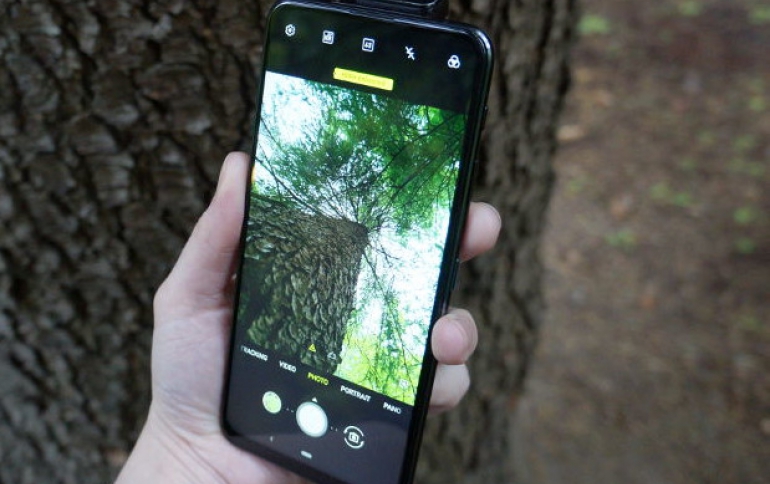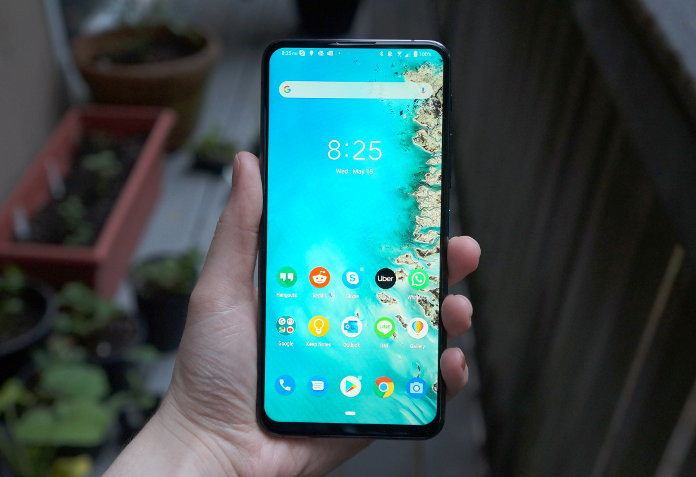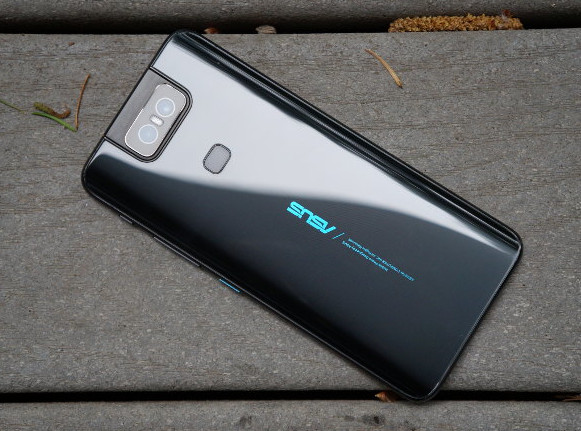
New Asus ZenFone 6 Comes With a Rotating Flip-top Camera
The Asus ZenFone 6 has officially been announced, coming without a top bezel thanks to a rotating camera.
The ZenFone 6 leverages a rotating camera module that allows you to use the same powerful sensors and lenses for regular photos and front-facing selfies. The regular and wide angle cameras pivot to give you quality whether you’re capturing selfies, a wide shot of a cityscape, or a picture of the Eiffel Tower.
The smartphone squeezes a 6.4” IPS panel (2340 x 1080 FullHD+), a Snapdragon 855 SoC, powerful 48MP camera, up to 8GB of RAM, and a maximum of 256GB of storage into a sleek metal-and-glass chassis that starts at €499.

It’s available in two colors: a moody Midnight Black and a Twilight Silver that blends into blue.
Gorilla Glass 6 flows right to the edges on the front, while the glass on the back curves around for a subtle contour that’s more comfortable to hold in your hand. The power button and volume rocker are positioned low enough to reach with your thumb, while the Smart Key, a programmable button that can be assigned certain functions, sits just above them.

The 48MP primary sensor is accompanied by a 13MP wide-angle camera and both are contained within a rotating module that’s nestled in the top frame of the phone, just above the fingerprint sensor. The housing is made from liquidmetal, which Asus says it four times stronger and 20% lighter than stainless steel. But if you do drop your phone, integrated sensors will tell the phone to retract the camera to further protect it from knocks and bumps.

Sealed inside the 1.25” x 0.86” liquidmetal module is a customized stepper motor with 13 gears. This is what rotates both cameras at the touch of a button, and it’s rated for 100,000 rotations, which works out to about 27 selfies a day for five years. You can manually control the mechanism from the camera app, panning as you capture video or adjusting the angle of your photo for a better view or more dramatically frames photos. Certain camera settings, like panorama mode or motion tracking, use the motor to reduce the need for you to move the phone at all.
| ZenFone 6 | |
|---|---|
| Processor | Snapdragon 855 SoC 8 x Kryo™ 485 CPU, clock speeds up to 2.84GHz Adreno 640 Graphics |
| Memory | Up to 8GB |
| Display | 6.4" Full HD+ IPS 1080 x 2340 19.5:9 aspect ratio |
| Storage | Up to 256GB Micro SD support |
| Primary Camera | 48MP Sony IMX586 image sensor f/1.79 aperture |
| Secondary Camera | 13MP with 125° wide-angle lens |
| Battery | 5000mAh, supports Quick Charge 4.0 |
| Connectivity | Bluetooth 5.0 2 x Nano SIM 802.11 b/g/n/ac Wi-Fi 802.11ax ready NFC USB Type-C 3.5-mm audio |
| Operating System | Android P Android Q Beta Program |
| Dimensions | 159.1mm x 75.44mm x 9.2mm |
| Weight | 190g |
A cool camera feature is Pano mode, though, because it eliminates the need to slowly sweep your phone across a scene in an attempt to capture a seamless panorama. Instead, you hold the phone steady with the camera aimed at your starting point and press the shutter button. The flip camera engages and slowly starts panning for you.
The standard features of the camera, like HDR, night mode, and slow-mo have been tweaked. HDR+ Enhanced mode tackles tricky shots where light and dark areas compete for control over the camera’s exposure settings. Traditional implementations of HDR capture three shots at low, medium, and high exposures, while HDR+ Enhanced mode captures six low exposure photos and blends them together to try to increase the dynamic range and reduce ghosting.
The ZenFone 6 ships with Android P, and is part of the Android Q Beta, which means you can opt in to be among the first to access the newest features of the 10th version of Android.
The ZenFone 6 will be available in a variety of configurations starting at €499.





















